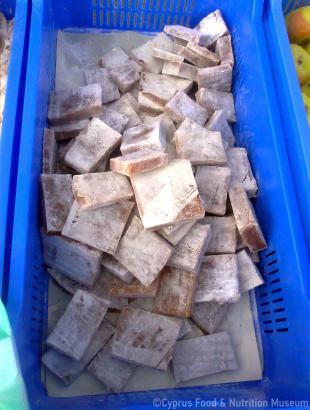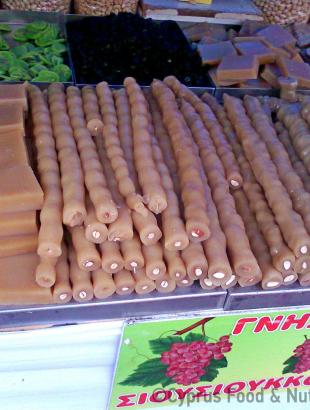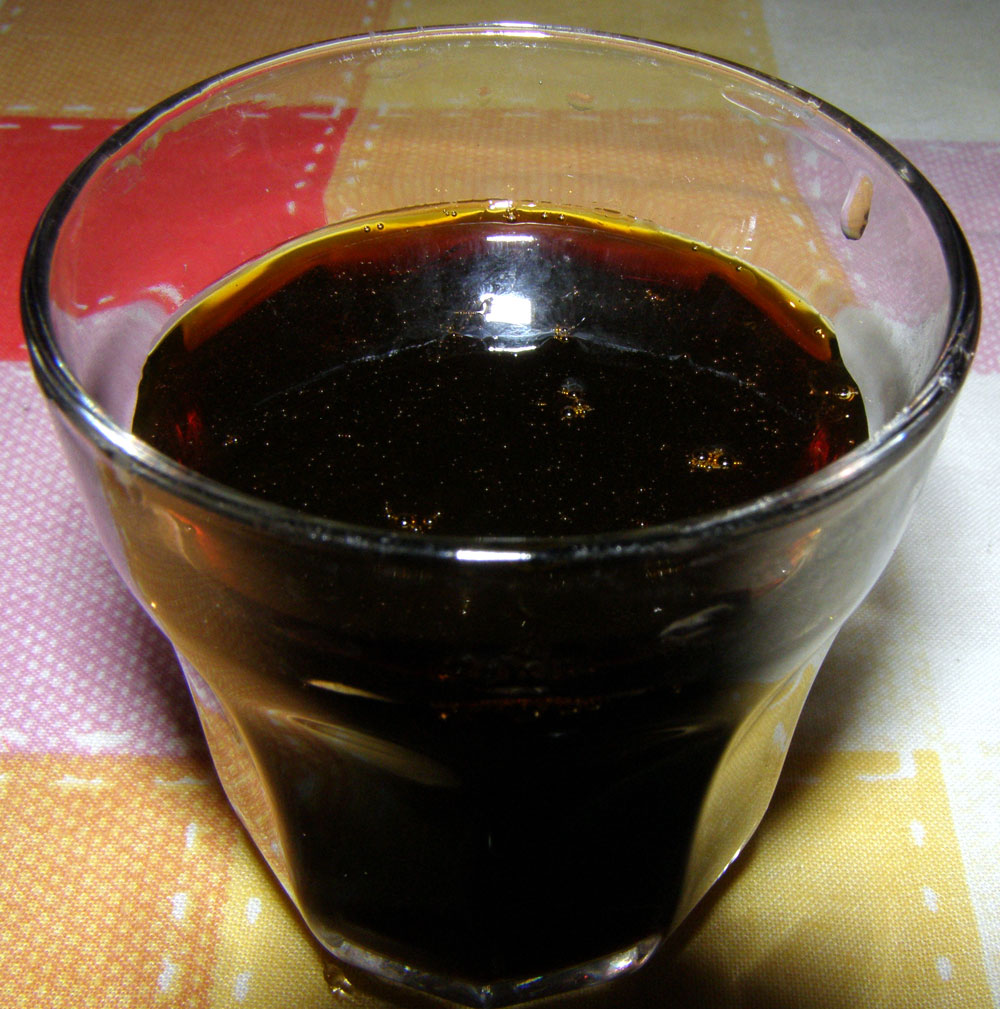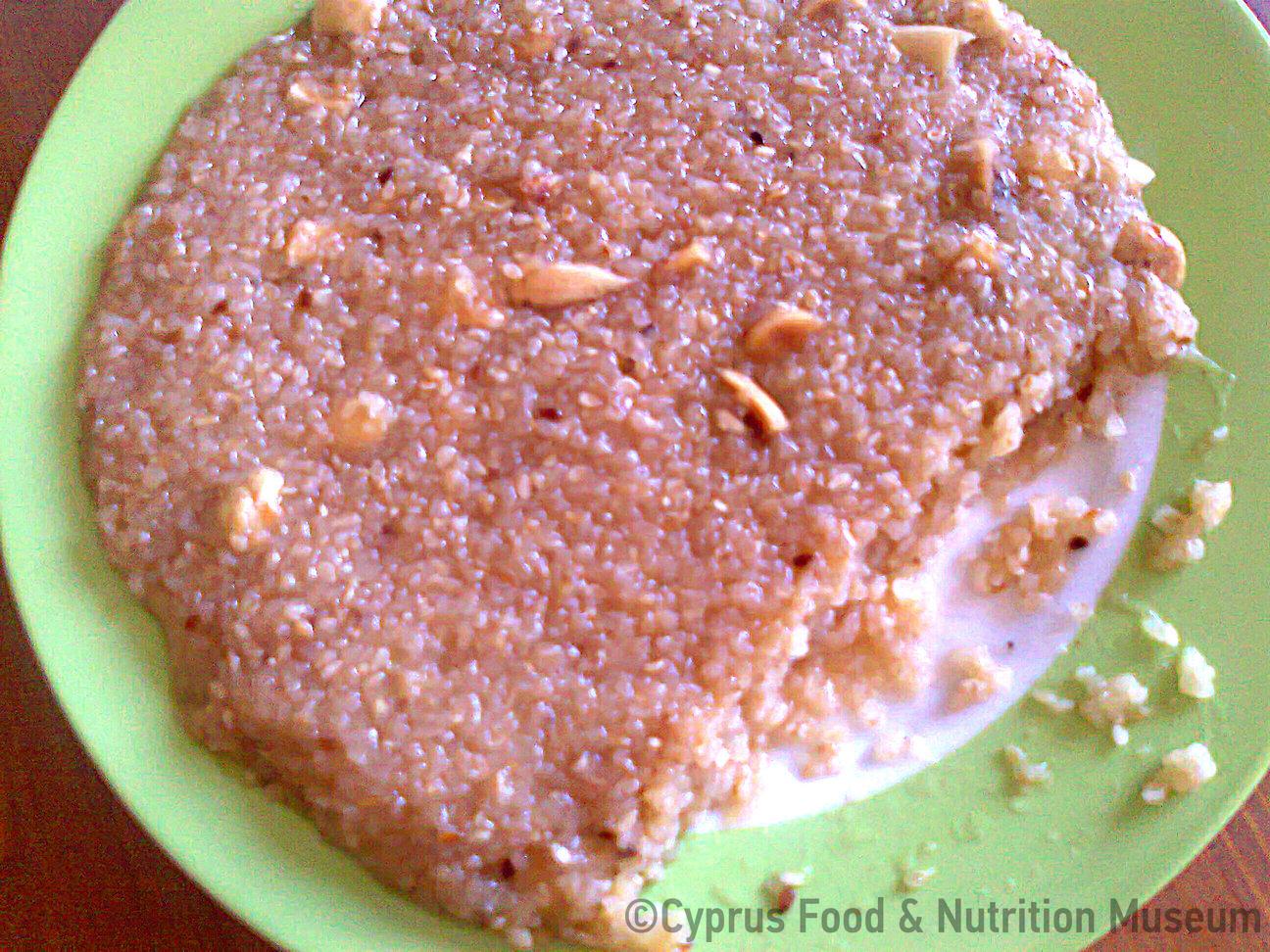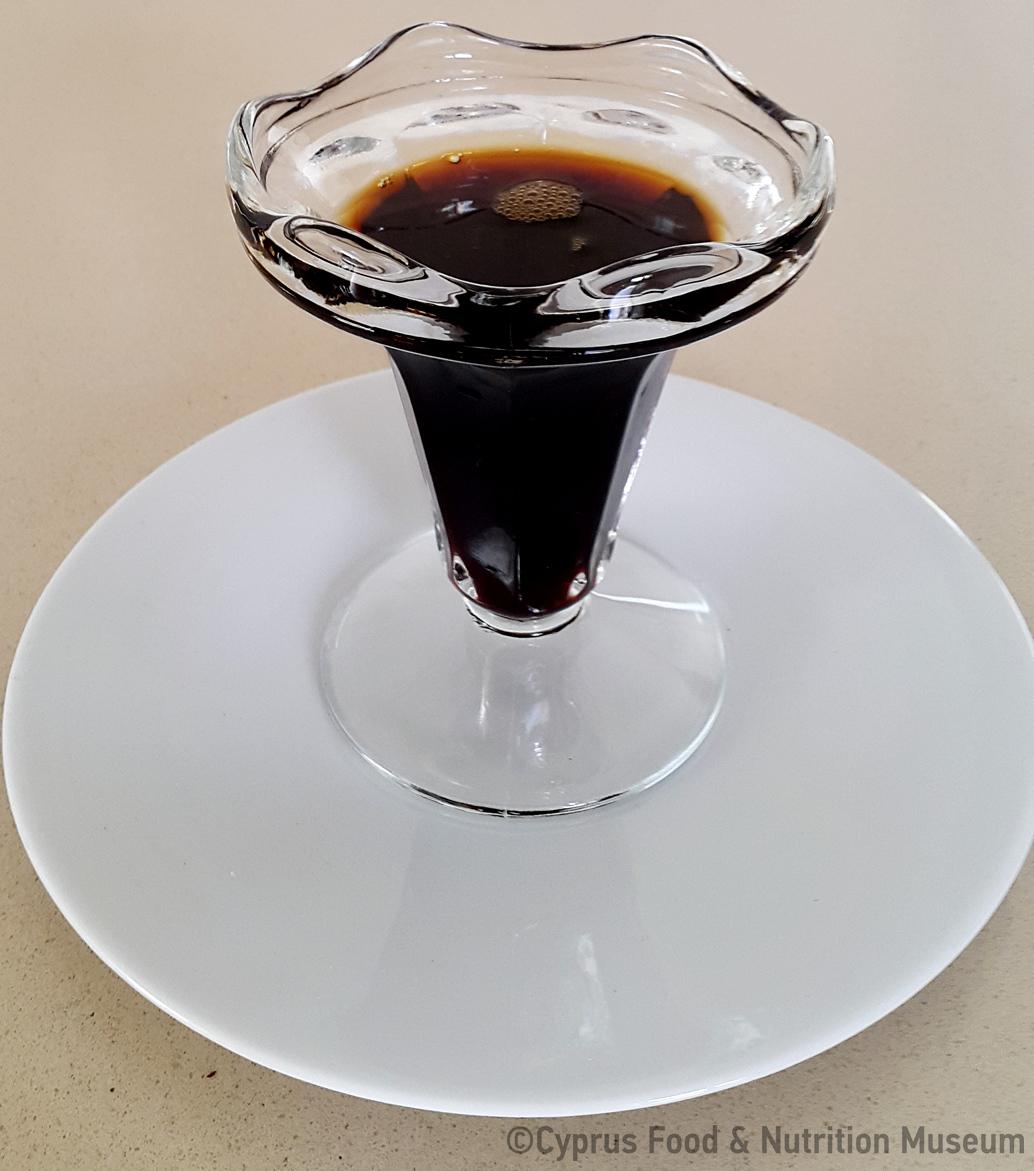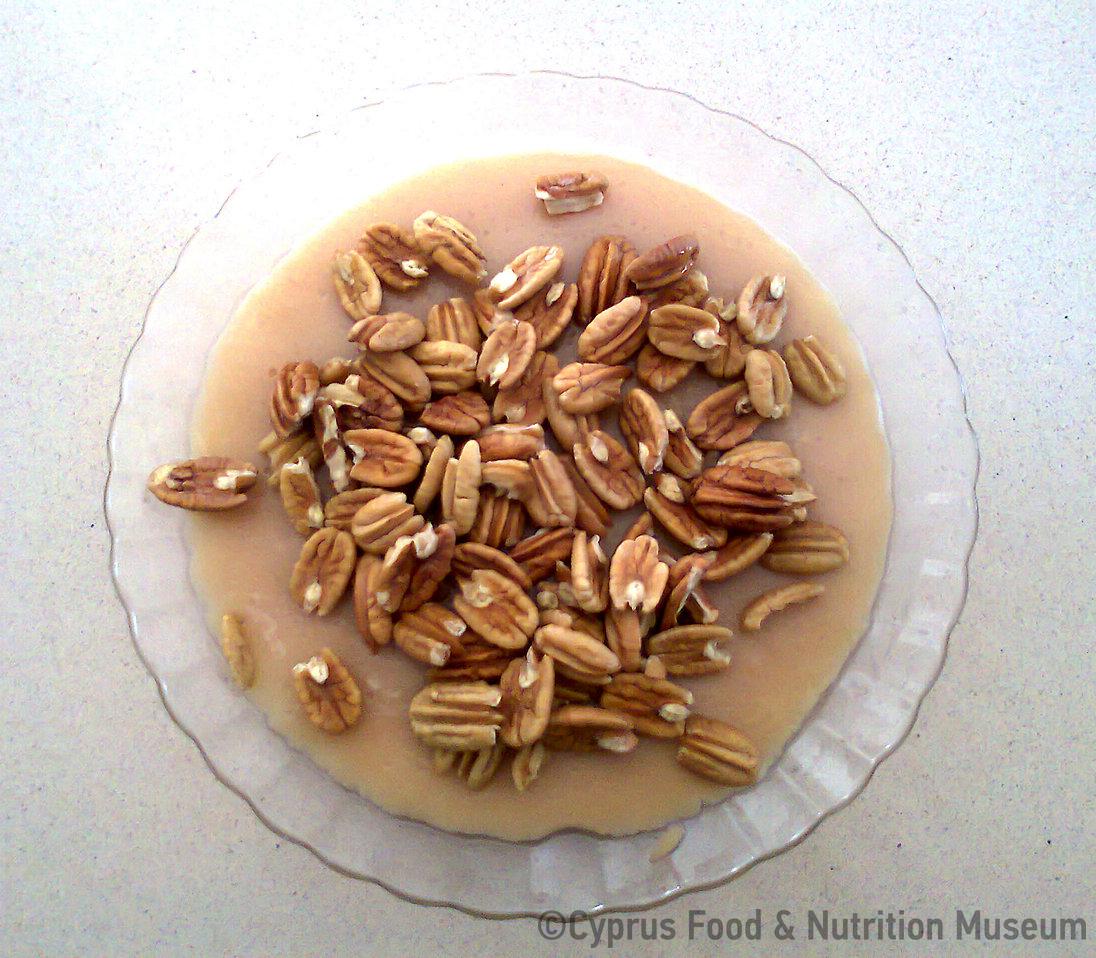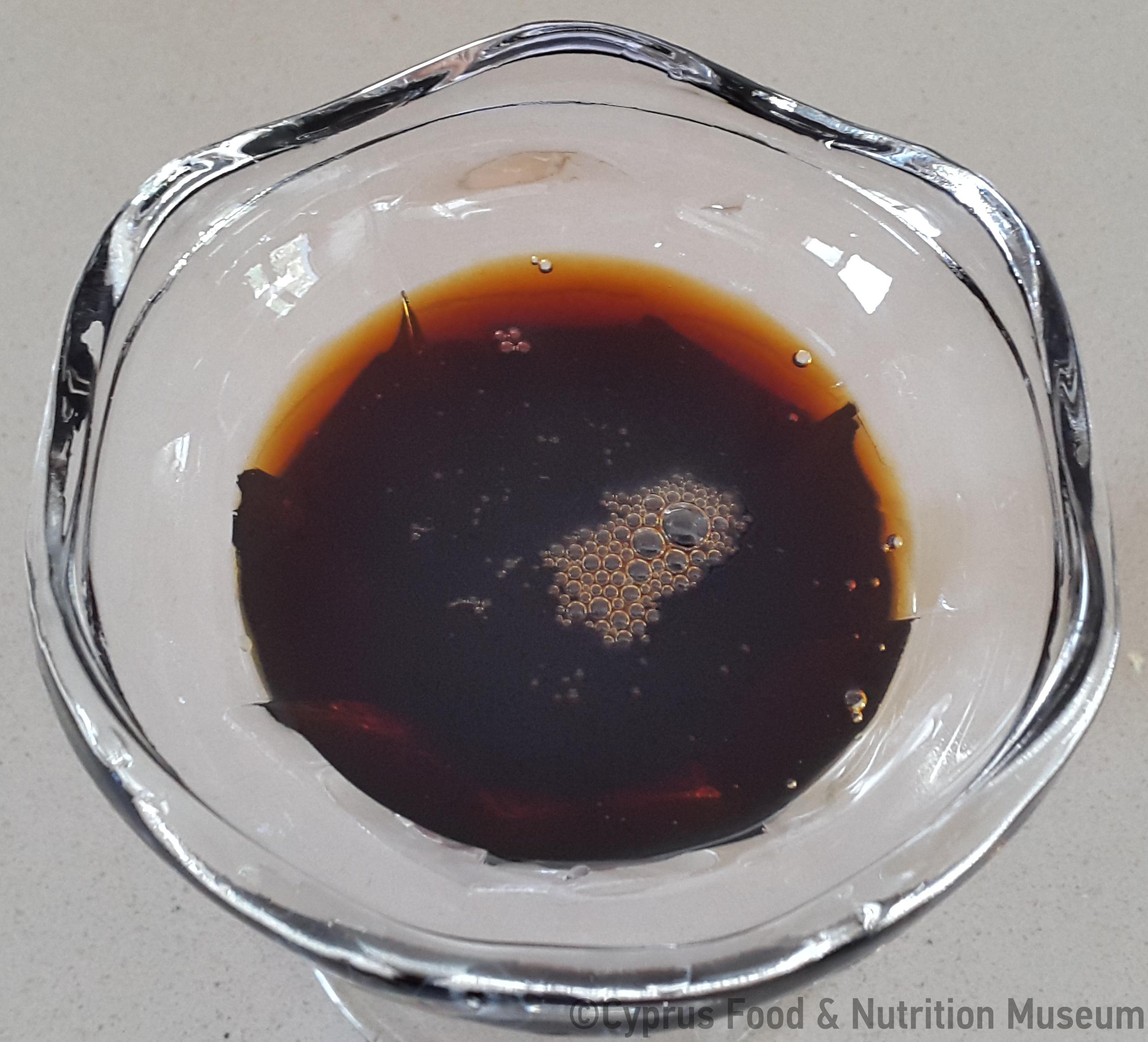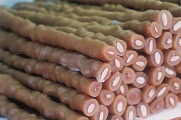"Kkiofterka are prepared just like ppalouze. When ppalouzes is ready to eat, we cut it in small square or long pieces and place them in a shady, cool place to dry' (Antroulla Christou, Agridia - Limassol).
Name - Recipe
These are dried sweets made of grape must.
Versions A-D
Ppalouze
Almonds (optional)
Version A:
Kkiofterka are made in the same way as ppalouzé is made. Place them on a baking tray on basil leaves. Cut them into small pieces and place them in the sun to dry for a few days (Testimony by Ourania Christodoulou, 72 years old, Kyperounda - Limassol).
Version B:
After the preparation of s̆oušoúkko place leftover ppalouzé in a baking tray (or more if needed). Sprinkle with almonds, if desired. Cut into rectangles and, once it has cooled down, place the tray in the sun so that they dry out. Turn often. When dry, they are ready. Kkiofterka were usually made without almonds (Testimony of Spyroula Christodoulou, Potamiou - Limassol, in Kourris and Lazarou 2007, unpublished data).
Version C:
"Kkiofterka are prepared exactly like ppalouzé. When ppalouzé has cooled down on the plates, cut into small square or narrow pieces, and place them in a shady, cool place to dry. They can be stored for only a few weeks. Then they need to be placed in the refrigerator' (testimony of Androulla Christou, Agridia - Limassol).
Version D:
Pour the ppalouzé mixture into a baking tray and, when it has cooled down, place it in the sun. Turn it over and, when it is dry (6-8 days), cut it into square pieces. They are somewhat chewy and can be kept for a long time ( Kythraiotou 2013, 59).
Functional and symbolic role
In the old days, they used to heat the kkiofteri on the fireplace and eat it. It is also consumed as a dessert or as an appetiser along with zivania [zivania = a type of Cypriot tsipouro], almonds and/or walnuts (Testimony of Spyroula Christodoulou, Potamiou - Limassol).
'Traditional grape juice products, accompanied by nuts and zivania, are an attractive and nutritious treat to visitors of mountain villages ' (Ministry of Agriculture 2006, Traditional grape juice products).
Additional information and bibliography
Kkiofterka were prepared as soon as every housewife finished her harvest. In the old days they were only prepared for private use. Today, kkiofterka are made both by private individuals and by small and large businesses that deal with grape products from August to September or a little earlier or later (Testimony of Spyroula Christodoulou, Potamiou - Limassol).
Excerpt from an interview with Mrs. Androulla Christou from Agridia, Limassol: "Question: How often do you do them now? Answer: Once or twice a year: in October and November.
Question: How often did you make them previously? Answer: Previously, we used to make them once or twice a year, but in larger quantities, and we would keep them in a cool place" (Testimony of Androulla Christou, 58 years old, Agridia - Limassol).
Kourri P. and Lazarou S. (eds.) (2007), Traditional recipes of the village of Kyperounda (unpublished data).
Kythraiotou F. (2013), Gastronomic guide of Marathasa, Ministry of Education and Culture - Pedagogical Institute, Nicosia.
Ministry of Agriculture, Natural Resources and Environment, Department of Agriculture (2006), Traditional grape juice products (Ppalouzes, Kkiofteri, Epsima, Grouta and Soutzioukkos), Press and Information Office, Nicosia.
Testimonies: Androulla Christou, 58 years old, Agridia - Limassol. Recording: Zenovia Charalambous, October 2010. Edited by: Stalo Lazarou. Spyroula Christodoulou, Potamiou - Limassol. Recorded by Maritsa Christodoulou, 2010.
Stalo Lazarou, Zenovia Charalambous, Maritsa Christodoulou, Argyro Xenophontos, Tonia Ioakim
